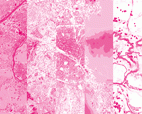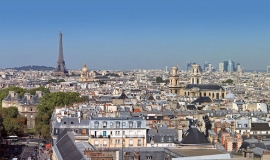
Apur supports public policies by producing data, maps and studies. The Agency is of the firm belief that the city is not just a construction of paper, figures and maps and is keen to share the history and geography of the city with its inhabitants and users, of whom over 80 collaborators draw rich and varied portraits every year.
The 2015 portraits are many:
We have uploaded 52 documents, studies, notes and datavisualisations; by April, 2016, we will have released over 70 original, cross-referenced data sets containing information about the physical nature of the city, comparative regulations, nature, water, energy, built fabric, urban projects and transport…
These data sets enrich the CASSINI cartographic system which allows all kinds of detailed maps of land plots of over 700km2 to be superimposed. They are networked to our partners’ databases: the National Institute of Statistics and Economic Studies (INSEE), of course, but also the Department of Public Highways and Transport (STIF), the Grand Paris Transport and Development Organisation (SGP) and all those which will gradually be made freely available on the web.
In 2015, Apur received the Award for Geographic Excellence from the Esri-France Society, for this work. I would like to congratulate all the members of Apur who made winning this important award possible. The prize recognises the quality of Apur’s cartographic work and GPS output over 25 years. This work, which is now developed on the scales of both Paris and the Grand Paris Metropolis, has enabled the building of a metropolitan-scale reference database within a broader, metropolitan framework of institutional partnerships, in particular with the National Institute of Statistics and Economic Studies (INSEE), the Ile-de-France Regional and Interdepartmental Department of Infrastructure and Development (DRIEA) and the Ile-de-France Development and Urbanism Institute (IAU-IdF).
The studies have presented portraits of the sustainable city, urban metabolism, housing stock, adaptation to climate change, urban services, water, energy, logistics, waste, the intelligent and innovative city, housing, new economies, shops, portraits of the population, mobility and the road network. Knowledge of the metropolitan territories has become clearer and richer. The 60 Grand Paris Express station neighbourhoods of the eponymous Observatory were described in the summer of 2016. These descriptions were accompanied by themed studies: culture, undertaken with the Regional Department of Cultural Affairs (DRAC), health, with the Regional Health Authority (ARS), economy and quality of life, with the National Institute of Statistics and Economic Studies (INSEE).
The following also make up part of Apur: exchanges with students from Sciences Po Paris, the City of Paris School of Engineering (EIVP), the Paris & co start-ups, and in a world context, over 40 international delegations were welcomed and 7 metropolises requested our support. We support Recube, young students on their trip around the world of circular economies. The information technology tool was resized, so that the whole workforce could have free access to all the software; ground surveys are now done on tablets and feed directly into the databases.
Accumulating knowledge means also knowing how to store it: 2015 was an intense period in the archiving process, with gifts of scale models to the Carnavalet Museum and the Cité de l’Architecture et du Patrimoine-the Archtecture and Heritage Complex-, and deposits into the Paris archives; our whole stock of journals was donated to the Schools of Architecture and Urbanism.
Finally, in order to make good portraits, one must play a variety of roles: the city can be seen as a kind of music to be shared. Apur’s contribution to the recomposing of this music comes through new methods, workshops, Porte Maillot, Montparnasse, the 7 squares, the Champs-Elysées, North-east Paris, Bercy Charenton, the Ourcq Canal, the RN2…
Apur “innovates with many” as can be seen with the call for proposals for the projects “Reinventing the Seine”, the Arc of Innovation, Paris Métropole and its preliminary outline mission, the Olympic Games with the Ile-de-France Development and Urbanism Institute (IAU-IdF), the road network with the Ile-de-France Regional and Interdepartmental Department of Infrastructure and Development (DRIEA) (motorways) and the Seine axis with the 6 Urbanism Agencies between Paris and Le Havre.
The new Apur has a definite identity as a Parisian agency, but it is also a public, shared, forward-looking agency, an agency embracing all possibilities, an agency drawing up urban and territorial portraits, an agency at the service of everybody. This activity report is intended to reflect this shared commitment to you all.

